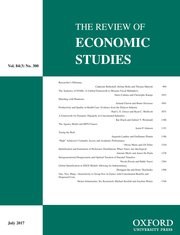
Janssen, M.C.W. and Moraga-González, J.L. (2004). Strategic pricing, consumer search and the number of firms Review of Economic Studies, 71(4):1089--1118.
-
Affiliated author
-
Publication year2004
-
JournalReview of Economic Studies
We examine an oligopoly model where some consumers engage in costly non-sequential search to discover prices. There are three distinct price-dispersed equilibria characterized by low, moderate and high search intensity. The effects of an increase in the number of firms on search behaviour, expected prices, price dispersion and welfare are sensitive (i) to the equilibrium consumers' search intensity, and (ii) to the status quo number of firms. For instance, when consumers search with low intensity, an increase in the number of firms reduces search, does not affect expected price, leads to greater price dispersion and reduces welfare. In contrast, when consumers search with high intensity, increased competition results in more search and lower prices when the number of competitors in the market is low to begin with, but in less search and higher prices when the number of competitors is large. Duopoly yields identical expected price and price dispersion but higher welfare than an infinite number of firms.